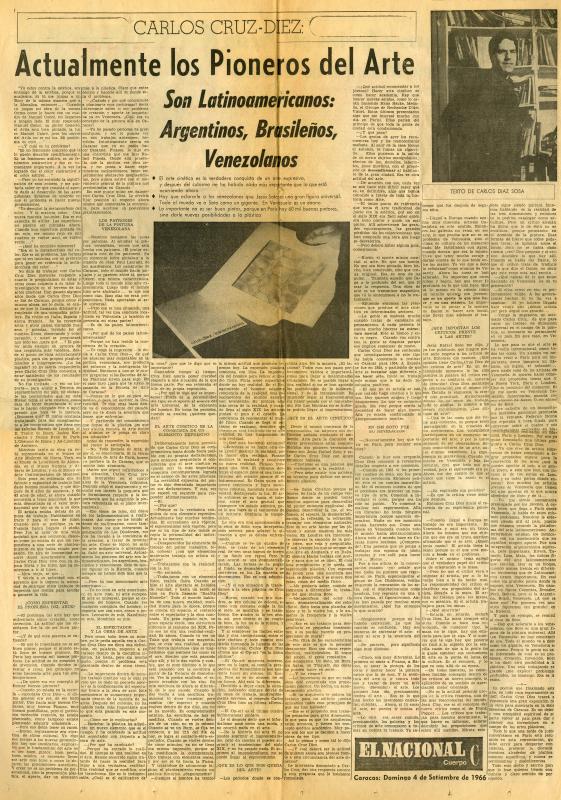This informative and critical article is of particular interest to researchers who seek to understand the positions in place at the time in Latin American art circles. Some artists were anxious for international fame but knew that their work would never achieve the desired relevance, enclosed as it was within national and regional boundaries. Others thought the subcontinent would never achieve true cultural independence and sought to increase the “Americanist” quality of their works. Carlos Cruz-Diez was one of the first to oppose any attempt to interpret his work through that lens; for him, art was the “invention” of new expressive mediums and had nothing to do with the expression of national or regional characteristics.
The article mentions some of the “Americanist wariness” prompted by the awarding of the prize to Cruz-Diez at the Cordoba biennial. After announcing the Grand Prize, the article writer presents arguments (he claims to have heard) from viewers, critics, and art connoisseurs to the effect that, to some, the most complete piece was the one from Uruguay. Also, that the prizewinning works (which were mainly abstract) were poorly made and were not particularly representative of their movements. Finally, there were complaints that works that met the conditions of the biennial had been rejected, works of great artistic value related to the “Americanist spirit” that was beginning to wean itself from the custom of imitating European art. The article thus implies that the III Bienal Americana de Arte should help to ensure the establishment of an atmosphere of genuine artmaking in the region, avoiding any reliance on hegemonic European artistic ideas.
To compare this newspaper article with Carlos Díaz Sosa’s interview of Cruz-Diez almost a month later (see doc. no. 1472306 in the ICAA Digital Archive).

